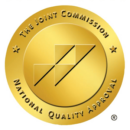According to the most recent 2018 National Vital Statistics System report, Fentanyl has now become the most dangerous and deadly opioid, surpassing its less potent opioid cousin, heroin, as the drug causing the most opioid drug deaths as a result of the drug epidemic or opioid epidemic sweeping New Jersey, the United States, and the world at large. New Jersey alone has been so ransacked by the effects of opioids that it is currently taking Purdue Pharma to court because they believe that Purdue Pharma wrongly represented the prescription opioid medication Oxycontin as they made a big push to market the drug as less addictive than other opioids and downright safe. When in reality the drug is just as deadly as its’ cousin prescription opioids like Vicodin.
New Jersey’s government points a finger at this false publication of Oxycontin’s benign nature as contributing to the stair step effect that opioids take their addicts on – progressing them from prescription opioids all the way to a deadly fentanyl addiction. Essentially New Jersey is saying that Purdue Pharma is responsible for many many deaths due to opioid addiction. Those are heavy charges to weight against a pharmaceutical company, but when you see the devastation that the state of New Jersey has experienced due to the effects of opioids on its communities it is clear why the state is interested in holding those who play a part responsible.
In New Jersey, just like in the the wider United States, the powerful opioid fentanyl has been dominating in the headlines for some time as it has been on its way to breaking past heroin in the deadliest opioid on the streets these days. Fentanyl wasn’t always so ubiquitous in the drug scene. It first started when several prominent people ended up dying from overdoses on the narcotic substance. Famous musician and cultural icons Prince and Michael Jackson both died from a tragic cocktail of substances within them, but one of the biggest factors for the iconic musicians tragic deaths was the presence of fentanyl in the mix. Others have died in the spotlight as well and as more celebrities do, more people in the general public use the drug as well.
But these days we are waking up to headlines reading about not only the fatal overdoses of celebrities and others who have taken fentanyl the drug, but also non-users, particularly first responders, who are at risk of coming into contact with the drug and not who don’t always know how to safely handle the situation. Everything from police officers to prison guards, public responders and civil servants of all sorts are learning that they have no clue how to safely take care of situation with the drug if they encounter it whether at a crime scene or trying to save someone from overdose. Fentanyl can be very detrimental to users in all of its various forms, but sometimes you don’t have to intentionally take the drug for it to negatively affect your body. One of the different ways fentanyl can be most dangerous is when it is in the form of a powder. At that point if the drug comes in contact with someone’s eyes, or if they breathe the fentanyl in through their nose or mouth it can be problematic.
For example, according to The Associated Press, In an Ohio prison, thirty people were treated because of an exposure to what they believe to be a combination of both heroin and fentanyl. The prison was then put on lock down and the parties affected by the airborne drugs were taken to a hospital. Another instance in Massachusetts Police were exposed to Fentanyl while they were responding to what was apparently a fatal overdose. The officers were exposed to large amounts of Fentanyl. Soon afterward those exposed began to experience symptoms of nausea and vertigo. Stories like these are cropping up more and more in news papers and all over our news feeds, as the opioid crisis changes from a prescription pain pill crisis, to a heroin crisis to, quite possibly scariest of all, the Fentanyl crisis. All opioids are incredibly dangerous, but Fentanyl can be up to 100x more dangerous than heroin, the next most potent opioid.
Fentanyl Is Also Known As:
Prescription Fentanyl is often also called:
- Actiq
- Dragesic
- Sublimaze
When combined with heroin it can also be called:
- Apache
- China Girl
- China White
- Dance Fever
- Friend
- Goodfella
- Jackpot
- Murder 8
- TNT
- Tango & Cash
Fentanyl has taken the opioid epidemic from a place where the general public in America, who weren’t dealing with chemical dependence and maybe didn’t even know someone who was dealing with an addiction, to a society where almost everyone knows someone who is being completely controlled by a substance that is inevitably absolutely ruining their lives, or perhaps beginning to. Even if someone isn’t aware of anyone around them with a problem such as this, they certainly have read headline after headline of those dying across the country and the globe from death by Fentanyl, or other opioids. Everywhere from political speeches to impassioned messages in lieu of thank yous from stars at The Oscars or other awards shows we hear the pleading for more research and answers for this, one of the most deadly struggles in human history.
Multitudes of people, and the numbers are climbing, are now experimenting and consistently engaging with the high potency drug. The overdose numbers are rising and those overdoses are often fatal because of how little the drug requires to affect a body. Because we are seeing so many more overdoses a higher number of our emergency responders are getting exposed to the drug each day either via an overdosed patient, or when a security or police officer searches a person and finds the intoxicant on their person. Some first responders who most recently reported feeling the effects of the opioid needed to be treated just by brief skin contact and a brief airborne exposure.
It is clear when even those who keep us safe are scared of a substance just from incidental exposure that we have a bigger problem than we are currently equipped to deal with. Perhaps that is why this year the United States Department of Justice released this video in hopes of calming first responders fears that the drug was potent enough that they may die from just touching the substance. The video is meant as a means of education for first respondents and emergency respondents to help them learn about the possible ways they can protect themselves against the effects of the highly dangerous substance.
How Can Someone Protect Themselves

For a first responder or other emergency responder to understand how they should protect themself, they first must understand how they may be exposed to Fentanyl in the first place. Whether the person is a police officer, emergency medical technician, a firefighter, or some other type of official service member there will be different scenarios for each person as even two EMT’s know that every call is different but here are a few ways that Fentanyl exposure could happen:
Exposure to Fentanyl Could Happen Through:
- Injected into the veins
- Injected into the muscle
- Ingested
- Breathed in
- Skin Contact
- Eye Membrane
As a first responder, or any person who may come in contact with Fentanyl, need only take the proper precautions if they want to remain safe and in most situations quite unaffected by the opioid narcotic.
Safety Measures To Take with Possible Exposure To Fentanyl:
Never do this:
- Never Assume It’s Safe – if a first responder or other person is exposed to a substance like Fentanyl and are not sure what the substance is, always assume that it could be dangerous. Never underestimate an unknown subject.
- Never Taste It – This cannot be said enough. Ingesting any drug is one of the most common ways to administer a drug, especially opioids, not to mention a common way that first responders and others have accidental exposure to the drug.
- Never Smell It – First responders in shows or movies often sniff an unknown substance to try and identify it but in reality one should never sniff an unknown subject since a person’s nostrils have some of the most sensitive bio-availability in the body, this is why snorting substances like opioids or cocaine can be a faster way of feeling their effects.
- Never Feel It – Though it is less likely that skin contact will cause an overdose or really even greatly affect a person, it is true that prolonged skin contact can cause some absorption of the drug. Some first responders have even reported experiencing symptoms after just touching the substance.
Always do this:
- Always Double Up When You Glove Up – Double your gloves for extra protection against this sensitive drug and as the Department of Justice’s video says, do not use hand sanitizer to clean your hands after exposure. It could hasten and worsen the effects of the drug.
- Always Wear a Protective Breathing Mask – Fentanyl is at its most dangerous for first responders when it is airborne. If large amounts of Fentanyl are in powder form in the air or the environment, leave the situation immediately and alert the law enforcement and health officials immediately.
- Always Protect Your Eye Membrane With Safety Goggles – In their video to first responders the United States Department of Justice warns against the exposure to your eye membrane though previously Canada’s Public Services Health and Safety Association said in a fact sheet they released that it was not not verified that exposure via the eye could drastically affect a person. Either way, goggles will keep your eyes protected and better safe than sorry.
- Always Know What You’re Looking For – The Department of Justice did the right thing by releasing the above video to educate our first responders about the dangers of fentanyl, both the mythology of the danger and the realities of it. The most important thing a person can do to keep themselves safe is to understand how to recognize the substance and how to recognize fentanyl intoxication in other people, as well as in themselves.
Let’s Look at The Numbers
So we know that Fentanyl overdose is sweeping the nation and making a name for itself separate from its other opioid cousins such as morphine, heroin, and oxycontin and other prescription pain pills. It doesn’t matter if a person is using the drug on purpose, or suspects that the drugs they have been taking could have been laced with Fentanyl, or whether the person is a first responder who ends up affected by accidentally ingesting or inhaling the drug, it is important to know the signs and symptoms of overdose from fentanyl.
Signs and Symptoms of Overdose
- Severe exhaustion, lethargy, or sleepiness
- Lack of response
- May exhibit slow or relaxed breathing
- Lips or nails may become bluish
- Skin may become cold and clammy
- Heart rate may slow
- Pulmonary function may be inhibited
- Pupils may become narrow like the head of a pin
It is also important to very important to know what the current state of the problem of fentanyl is in the country. As we are watching the opioid crisis respond to the growing world wide scrutiny, Fentanyl is creating its own devastating name for itself almost completely separate from the opioid epidemic as we know it. Watching opioid related drug deaths by other drugs decrease, death by fentanyl is trending steadily upward. The Boston Herald states that the latest Department of Public Health data shows that though heroin is becoming less popular by itself, the news is not all good because fentanyl users now trend to cocaine laced with fentanyl instead, and heroin laced with fentanyl is also a cocktail on the rise.
“According to the DPH’s quarterly report, the presence of fentanyl in opioid-related overdose deaths statewide reached an all-time high in 2017, with traces of the potent opioid found in 90 percent of such deaths; that alarming rate remained at 90 percent through the first quarter of this year. The figure represents a more than 100 percent increase since 2014, when fentanyl was present in 40 percent of overdose deaths, according to the DPH quarterly report.”
But is Fentanyl Still The Most Potent Opioid?
Surely we, humanity, the same species being rapidly thinned by opioids, surely we wouldn’t produce an even more potent opioid than Fentanyl, the most deadly and dangerous drug readily available? Indeed we would. Since the start of the opioid epidemic, Fentanyl has been the bad guy. Not only killing people by itself but taking them over the edge into oblivion with their usual drug of choice when Fentanyl is cut with such intoxicants as heroin or cocaine.
Fentanyl is a kind of synthetic opioid that has been used for years for such medical practices as sedating a patient for surgery, used in post-surgery to block pain. The narcotic was developed in the 1960’s as a pain blocker and an anesthetic. When it was first developed the drug was was closely regulated and was mostly just available via prescription only, however as with most drugs, the longer it has been on the market the easier it has become to get as it becomes easily taken through the subdermal patch. In the 1990s anyone could easily take fentanyl at home or even as they are out and about. Since then fentanyl has exploded within the US as an illicitly taken prescription medication, as if it were vicodin or codeine, except that fentanyl makes those opioids look like a simple dose of tylenol, which in and of itself is absolutely capable of giving you liver failure if you take too much of it, but when taken properly is quite safe. Prescription opioid medications are perhaps the most effective gateway drugs in history as people go from codeine, to vicodin, to heroin to fentanyl and all too often to their graves.
The Deadly Reality of Fentanyl
With all of fentanyl’s deadly traits in mind, it is very easy to understand that there are some physicians and first responders out there who are quite concerned about the fact that the US Food and Drug Association have now approved usage of a brand new, and even more potent opioid, Dsuvia. This opioid is in fact ten times more deadly than fentanyl is. Dsuvia was developed by AcelRx Pharmaceuticals and was supported by the military and now passed for use by the FDA.
Even among the committee members considering the opioid, there were disagreement about the whether or not it was necessary to releasing another highly dangerous opioid to the public. Dr. Raeford Brown, the chair of the committee and a anesthesiology and pediatrics professor at the University of Kentucky, showed his concern about Dsuvia, which he noted comes in a form that can be “easily diverted”—meaning someone, even someone without a prescription may have ready access the drug because we know as with other medications, especially opioids that when they move into an easy to administer form they become available to anyone very quickly. “This drug offers no advance, in my mind, over previously available opioid formulations, but provides great risk of harm to patients and the general public health,” Brown told Marketwatch in an interview.
Treatment for Addiction at The Top Rated Drug Rehab Centers in NJ
First responders can take all the precautions in the world, but there is no safe place to run from exposure to an opioid when you are someone who is suffering from an addiction to the intoxicant. Those people who have struggled with an opioid addiction know just how powerful the tolerance that opioids like heroin, vicodin, morphine rapidly builds within an addict. It’s not unlikely that a person who is intentionally intaking Fentanyl may have started in a doctor’s office or hospital due to some kind of pain, with a prescription to a far lesser dangerous opioid, such as hydrocodone or even codeine.
It is a slippery slope with opioids because this kind of drug attaches itself to the addiction and rewards center of the brain and quickly becomes a need for the addict. Chemical dependency is swift and insistent. Addicts who have valiantly fought opioid addiction know all to well just how easily minor triggers can lead to deep and persistent cravings. Fentanyl is startlingly powerful and dangerous, and often underestimated, perhaps due to just how big of a giant in potency that it is in comparison to the other drugs in the opioid family. Anytime an addict is exposing themselves to an opioid they should be aware that they could be taking a drug that very well may be laced with Fentanyl.
New Jersey Detox Withdrawal Symptoms
- Anxiety
- Panic Attack
- Body Ache
- Insomnia
- Stomach Cramps
- Profuse Sweating
- Flu Like Symptoms
- Large Pupils
- Goosebumps
Treatment for a user in New Jersey struggling with an addiction to fentanyl or any sort of opioid begins with detox in New Jersey. Medically supervised detoxification can start the addict down the right recovery path. Patients must be sure to take on detox and withdrawal only when they are medically supervised so that they can be sure that any co-occurring disorders, or dual diagnosis that they are dealing with simultaneous to their addiction can be tended to at the same time as their withdrawal and then into their New Jersey rehab. If a user tries to detox on their own from fentanyl it can lead to serious medical complications including in some cases the worst symptom of all, the addict’s death. At a drug detox facility, however, a medically qualified staff will be present so that they can monitor the patient’s physical and emotional wellbeing, even as the patient is feeling overwhelmed and afraid throughout very difficult withdrawal symptoms, the staff will be a strong support to lean on.
Discovery Institute is an excellent option for anyone who is struggling with chemical dependency on alcohol or any illicit or prescription drug. Discovery offers a licensed medical staff and excellent amenities so a patient can focus on their own healing. Call us today and learn how to start your recovery journey right away.
Dr. Joseph Ranieri D.O. earned his BS in Pharmacy at Temple University School of Pharmacy in 1981 and His Doctorate Degree in Osteopathic Medicine at the Philadelphia College of Osteopathic Medicine in 1991. He is Board Certified by the American Board of Family Medicine and a Diplomate of the American Board of Preventive Medicine Addiction Certification. Dr. Ranieri has lectured extensively to physicians, nurses, counselors and laypeople about the Disease of Addiction throughout New Jersey and Pennsylvania since 2012.



